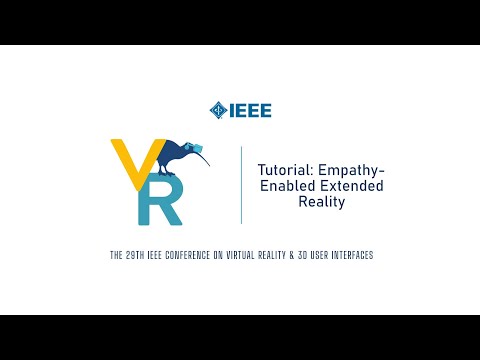Description:
Explore the concept of empathy-enabled Extended Reality (XR) in this IEEE VR 2022 tutorial. Delve into the integration of empathy in XR applications, examining both XR as an 'empathy machine' eliciting user responses and as an 'empathetic entity' adapting to users. Learn about incorporating contextualized empathy data, information, and services to enhance user experience. Discover how real-time physiological measurements can inform about users' cognitive and emotional states, enabling empathetic responses and content adaptation. Examine applications in healthcare and education, and explore topics such as computational modeling, adaptive XR, multimodal interactions, and neurotechnology. Gain insights into design choices, challenges, and future directions for empathy-enabled XR across various domains.

Empathy-Enabled Extended Reality
Add to list
#Conference Talks
#IEEE Virtual Reality Conference
#Art & Design
#Design & Creativity
#User Experience
#Personal Development
#Self Improvement
#Empathy
#Engineering
#GIS
#Remote Sensing
#Computer Science
#Computational Modeling
#Programming
#Mobile Development
#Virtual Reality
#Extended Reality
#Science
#Biology
#Neuroscience
#Neurotechnology